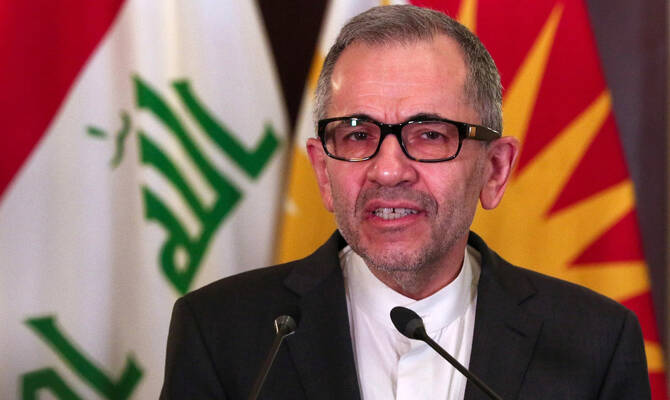TEHRAN: Iran is open to accepting temporary limits on its uranium enrichment, its deputy foreign minister said Tuesday, while adding that talks with the US have yet to address such specifics.
Tehran and Washington on Sunday held their fourth round of nuclear talks, which kicked off last month, marking their highest-level contact since the US in 2018 pulled out of the 2015 nuclear deal.
“For a limited period of time, we can accept a series of restrictions on the level and volume of enrichment,” said Deputy Foreign Minister Majid Takht-Ravanchi.
“We have not yet gone into details about the level and volume of enrichment,” he said, quoted by Tasnim news agency.
Iran currently enriches uranium to 60 percent purity — far above the 3.67 percent limit set in the 2015 deal but below the 90 percent needed for weapons-grade material.
US Secretary of State Marco Rubio said Monday that Iran was the only country in the world without nuclear weapons that enriches uranium to that level.
Iranian Foreign Minister Abbas Araghchi said at the latest talks that the right to enrich uranium was “non-negotiable,” while US chief negotiator Steve Witkoff called it a “red line.”
The Islamic republic began rolling back its commitments to the deal a year after the US withdrawal.
Since returning to office in January, Trump has revived his “maximum pressure” approach against Tehran. While backing nuclear diplomacy, he also warned of potential military action if it fails.
Iran described Sunday’s talks as “difficult but useful” while a senior US official said Washington was “encouraged” and both sides confirmed plans for future negotiations.
The talks are being held in “full coordination” with the supreme leader, Iranian President Masoud Pezeshkian said, according to a presidency statement on Tuesday.
“In the negotiations, we will not retreat from our principles in any way, but at the same time, we do not want tensions,” he added.
Also on Tuesday, Iran’s atomic energy agency chief, Mohammad Eslami, described the country’s nuclear industry as its “wealth and strength,” according to ISNA news agency.
Despite the talks, Washington has continued to impose sanctions targeting Iran’s nuclear program and oil industry, with the latest announced on Monday.
“There is no doubt that there is a lot of pressure on us,” said Ali Larijani, a close adviser to Iran’s supreme leader, while noting that not all of Iran’s problems were due to the sanctions.














